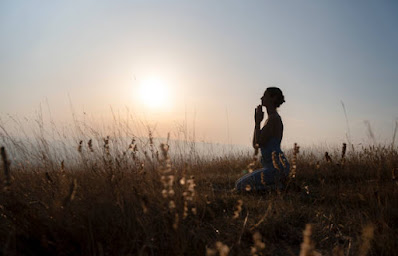Exploring Yogic Philosophy through Patanjali’s Yamas and Niyamas:
Picture yourself rushing through a hectic morning, spilled coffee, a terse email, and a nagging sense that life’s slipping out of sync. Now imagine pausing, taking a deep breath, and choosing peace over panic. That’s the essence of yogic philosophy, a path laid out by Patanjali in the Yoga Sutras over two millennia ago in the common era. The Yamas and Niyamas, the first two of his eight limbs of classical yoga, aren’t just for the yoga mat or asanas. They’re a foundation for living with harmony, self-discipline, well-being, and spiritual liberation in the world. This isn’t about perfecting postures or chasing flexibility, it’s a holistic approach to aligning your body, spirit, and inner world. In this journey, we’ll explore how these principles shape daily life, with practical ways to apply them, journal prompts to reflect, and a short yoga flow to embody their power. Let’s begin.
Understanding Yogic Philosophy
Yogic philosophy is a rich and intricate system of thought that forms the bedrock of yoga practice. Rooted in the ancient Indian tradition of Hinduism, it revolves around the ultimate goal of human life: achieving spiritual liberation. This philosophy delves deep into understanding the nature of reality, the self, and the ultimate consciousness, offering a holistic approach to life.
At its core, yogic philosophy posits that the ultimate reality is a unified, all-encompassing consciousness known as Brahman or the Absolute. This consciousness underlies all existence, and the journey of yoga is about realizing our true nature as a spark of this ultimate consciousness, striving for union with it.
Yogic philosophy also explores the nature of the self and the world. It teaches that the self is not merely the physical body but encompasses the mind, emotions, and spirit. Similarly, the world is not just a physical reality but includes subtle realms of energy and consciousness. This holistic approach considers the physical, mental, emotional, and spiritual dimensions of human existence, providing a comprehensive framework for understanding reality and the self.
In everyday life, yogic philosophy encourages us to look beyond the surface, to see the interconnectedness of all things, and to cultivate a deeper sense of purpose and well-being. It’s about integrating these profound insights into our daily practices, whether through meditation, self-discipline, or mindful living.
The Foundational Texts of Yoga
The foundational texts of yoga are ancient Indian scriptures that lay the philosophical and practical groundwork for yoga practice. These texts include the Yoga Sutras of Patanjali, the Bhagavad Gita, and the Upanishads, each offering unique insights into the nature of reality, the self, and the path to spiritual liberation.
The Yoga Sutras of Patanjali are a collection of 196 aphorisms that serve as a comprehensive guide to the practice of yoga. They outline the eight limbs of yoga, which include the yamas, niyamas, asanas, pranayama, pratyahara, dharana, dhyana, and samadhi. These sutras provide a structured approach to achieving mental clarity, self-discipline, and spiritual growth, making them a cornerstone of classical yoga.
The Bhagavad Gita, part of the Indian epic Mahabharata, is a dialogue between the prince Arjuna and the god Krishna. This scripture delves into the nature of duty, righteousness, and the path to spiritual liberation. It offers profound teachings on the practice of yoga, emphasizing the importance of selfless action, devotion, and knowledge in achieving union with the divine.
The Upanishads are a collection of ancient Indian scriptures that explore the nature of reality and the self. They provide deep philosophical insights into the ultimate reality (Brahman) and the nature of the individual soul (Atman). The Upanishads teach that realizing the unity of Atman and Brahman is the key to spiritual liberation, offering a timeless framework for understanding the deeper aspects of existence.
Together, these foundational texts provide a rich and complex system of thought that underpins the practice of yoga. They offer a comprehensive guide to the nature of reality, the self, and the ultimate goal of spiritual liberation, serving as invaluable resources for anyone seeking to deepen their understanding and practice of yoga.
The Yamas: Restraints for Harmony in Everyday Life
The Yamas, five ethical restraints, guide how we interact with the world. Rooted in Sanskrit and scriptures, they’re timeless keys to happiness and peace.
Yamas
Patanjali’s Yamas, Ahimsa (non-violence), Satya (truth), Asteya (non-stealing), Brahmacharya (moderation), and Aparigraha (non-possessiveness) form the bedrock of classical yoga. Rooted in Sanskrit, they’re not lofty ideals but practical teachings for the person navigating everyday life. Think of them as a compass for your journey, steering you toward truth and spirituality beyond the physical practice.
-
Ahimsa: Skip the harsh words in a disagreement, opt for breathing exercises to cool off. Choose food that’s kind to your body and the planet.
-
Satya: Speak your truth, tell a friend you need space instead of faking plans. Honesty builds confidence.
-
Asteya: Don’t steal time, focus during a meeting instead of drifting. It’s a discipline of presence.
-
Brahmacharya: Limit screen binges; save energy for a meditation moment. Moderation fuels well-being.
-
Aparigraha: Let go of grudges or that overstuffed closet. Non-possessiveness lightens your spirit.
The Niyamas: Observances for Inner Growth
The five Niyamas turn the focus inward, cultivating self-purification, well-being, self-discipline, and self-study. They’re the spiritual side of yoga’s eight limbs, shaping your inner world.
Self Purification
Saucha (purity) is about clarity in body and mind. It’s choosing water over soda, decluttering your desk, or practicing breathing to cleanse stress. In India, yogis saw self-purification as a means to health and concentration. In daily life, it’s a technique to relax and reset less noise, more peace.
Well Being
Santosha (contentment) is finding joy where you stand. Savor a quiet evening instead of chasing more it’s a form of spiritual happiness. This Niyama doesn’t need a yoga practice to work; it’s a mindset that boosts well-being amid life’s chaos, a key to existence with ease.
Self Discipline
Tapas (discipline) is the fire of commitment. Wake early for meditation, finish that task you dread—it’s self-discipline in action. Patanjali called it a path to power, not punishment. In everyday life, Tapas builds resilience, turning small efforts into energy and confidence.
Self Study
Svadhyaya (self-study) is understanding yourself. Read the Yoga Sutras, journal your emotions, or ask why you reacted sharply. It’s a meditation teacher within, guiding you to recognize patterns. This Niyama deepens your journey, connecting self to spirit.
Ishvara Pranidhana (Surrender)
Though not a heading, this Niyama ties them together. Surrender control—trust the path when plans falter. Dedicate a chore to love or spirituality. It’s a sense of relaxation, aligning life with something bigger.
Actionable Ways to Live the Yamas and Niyamas
These principles aren’t abstract here’s how to weave them into your daily life:
-
Ahimsa: Pause before snapping take five breaths. Try a veggie meal weekly.
-
Satya: Say one honest “no” today without guilt.
-
Asteya: Give a friend your full ear no distractions.
-
Brahmacharya: Cut screen time by 30 minutes; meditate instead.
-
Aparigraha: Donate three unused items this week.
-
Saucha: Clear one cluttered space, desk, mind, or diet.
-
Santosha: List three joys daily, small wins count.
-
Tapas: Commit to 10 minutes of movement or breathing exercises.
-
Svadhyaya: Read a scripture page—or any wisdom—and reflect.
-
Ishvara Pranidhana: Offer a task (e.g., cooking) to someone you cherish.
It’s about integrating these profound insights into our daily practices, whether through meditation, self-discipline, or mindful living.
Journal Prompts for Reflection
Use these to explore the Yamas and Niyamas in your inner world:
-
Yamas: Where do I cause harm…self or others? How can I soften it?
-
Self Purification: What clouds my clarity today? How can I cleanse it?
-
Well Being: What am I grateful for right now? How can I lean into it?
-
Self Discipline: What’s one goal I’ve avoided? What’s my next step?
-
Self Study: What did I feel today, and why? What’s it teaching me?
A Short Yoga Flow: Embodying Ethical Living
This 10-minute physical practice reflects the Yamas and Niyamas. No props—just a mat and breath.
-
Mountain Pose (Tadasana) – 1 minute
-
Stand tall, feet rooted, arms relaxed. Ground into Saucha, feel Santosha.
-
Intention: “I stand in harmony.”
-
-
Forward Fold (Uttanasana) – 1 minute
-
Hinge forward, hands to floor or shins. Release with Aparigraha, ease with Brahmacharya.
-
Breathe: Inhale long, exhale deep.
-
-
Low Lunge (Anjaneyasana) – 1 minute per side
-
Step right foot forward, knee over ankle. Open with Ahimsa, align with Satya.
-
Switch after 1 minute.
-
-
Child’s Pose (Balasana) – 2 minutes
-
Knees wide, forehead down. Surrender (Ishvara Pranidhana), purify (Saucha).
-
Whisper: “I let go.”
-
-
Seated Twist (Ardha Matsyendrasana) – 1 minute per side
-
Cross legs, twist right. Reflect (Svadhyaya), ignite Tapas.
-
Switch after 1 minute.
-
-
Corpse Pose (Savasana) – 3 minutes
-
Lie flat, palms up. Rest in all principles—truth, peace, spirit.
-
Breathe: “I am whole.”
-
Conclusion
The Yamas and Niyamas from Patanjali’s Yoga Sutras aren’t relics of India’s past—they’re a living path to well-being, harmony, and spirituality in daily life. Beyond asanas or breathing exercises, they improve how we begin each day—with self-discipline, contentment, and understanding. Try the actions, reflect with the prompts, flow through the practice—and see how yoga becomes more than movement. It’s a way to live. Which principle calls to you today? Share below—I’d love to hear your journey








